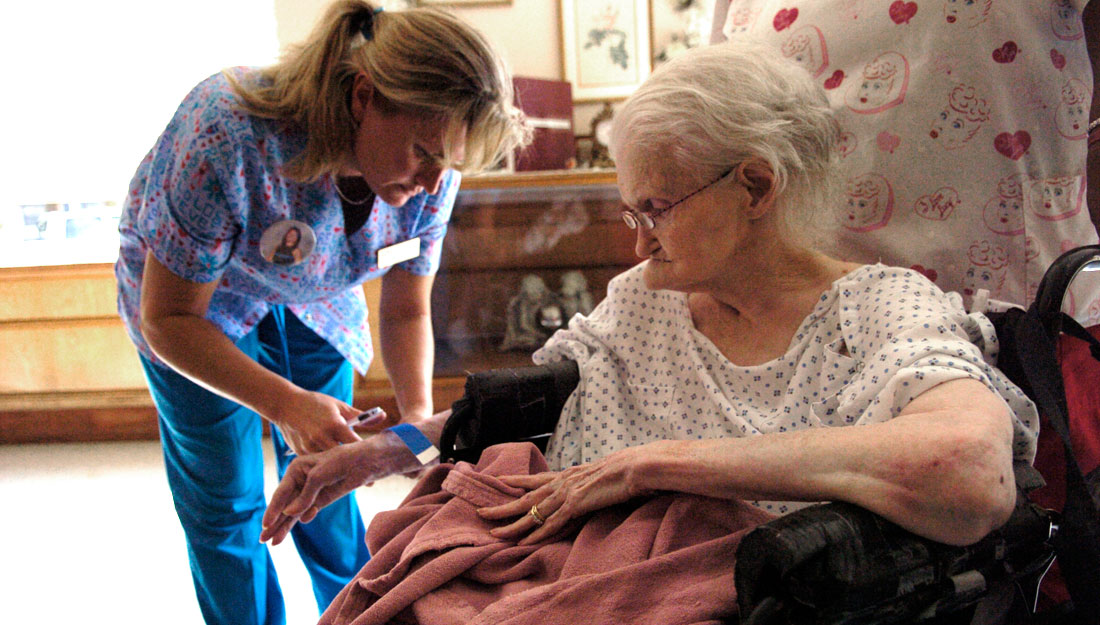Protecting a precious resource: Antibiotics in nursing homes

Overprescribing antibiotics can lead to dire consequences—the bacteria can become resistant to the drugs, and once-controllable diseases can run wild. This is especially common in places where people live closely together, like in a college dormitory or a nursing home—and older people in nursing homes may be especially vulnerable due to potentially weakened immune systems and so many of them being prescribed antibiotics due to common infections.
That’s why Darcy McMaughan, Ph.D., assistant professor at the Texas A&M Health Science Center School of Public Health, is helping health professionals decide when and when not to prescribe antibiotics, in continuation of work begun by Regents Professors Charles D. Phillips, MPH, Ph.D., and Catherine Hawes, Ph.D. As part of a three-year, $211,368 contract with the American Institutes for Research through the U.S. Department of Health and Human Services Agency for Healthcare Research and Quality (AHRQ), McMaughan is developing a Nursing Home Antibiotic Stewardship Guide.
“First we had to figure out what is going on in nursing homes,” said McMaughan, who was also selected as the 2015 New Investigator of the Year by the Disability Section of the American Public Health Association (APHA). To do this, she and her team looked at 12 nursing homes in Texas as part of a pilot study. “We have a lot of issues with overuse and misuse of antibiotics,” McMaughan said, “and these problems were through the roof for urinary tract infections, which are fairly common in nursing homes.” Overall, the researchers found that about 70 percent of the antibiotic prescriptions in the nursing homes for a suspected urinary tract infection (UTI) were given without the signs and symptoms of a UTI. This overprescribing is a type of overuse, while misuse of antibiotics is not prescribing the right one for a particular situation.
“That’s huge; it’s a really high number,” McMaughan said. “That’s frightening because if nursing home residents are receiving antibiotics more than they should, they can develop any number of complications, including a Clostridium difficile, or C. diff, infection, which can be deadly, especially for frail, older adults.” Although they were looking at patient records of past interactions and can’t know for sure that evidence of a UTI wasn’t present and just not documented, McMaughan said that she has to assume that if signs and symptoms had been there, they would have been in the patient’s chart.
McMaughan acknowledges that health care providers are under a great deal of pressure to prescribe a drug. “There’s a certain amount of risk involved in not prescribing antibiotics, especially when they are requested by the nursing home resident and his or her family members,” she said. The physician is risking a lawsuit if a patient dies as result of a bacterial infection after they were not given an antibiotic, while the risks of overprescribing take longer to show up and tend to be distributed across the entire population in the form of an increase in resistant strains of bacteria.
Once she identified a problem where a simple tool could be useful, McMaughan began to develop an instrument to facilitate communication and prompt health care professionals towards making the best decisions about prescribing antibiotics for suspected UTIs in nursing home residents.
When a health professional thought that a nursing home resident had a UTI, they would fill out the form, and it would walk them through evidence-based medicine and help them decide whether an antibiotic is warranted in this case. “We found that when it was implemented, it worked, and it reduced antibiotic overuse from 73 percent to 49 percent,” McMaughan said. Now, the project is expanding beyond Texas to selected nursing homes in Pennsylvania, California and Minnesota for field testing.
Once it has been validated, the guide will be placed on the Internet for any nursing home administrator who wants to improve antibiotic stewardship to use. Although the tool to help clinicians make better decisions is one major component, there are other elements, such as educational components for family members, included as well.
“My short-term goal is to improve the use of antibiotics in nursing homes, but this project is a piece of a bigger project, and our end goal is to keep antibiotics from failing and avoid the public health catastrophe that would result,” McMaughan said. “We’re loosing antibiotics because organisms are becoming resistant. In a sense, we’re running out of ammo.”
Media contact: media@tamu.edu


